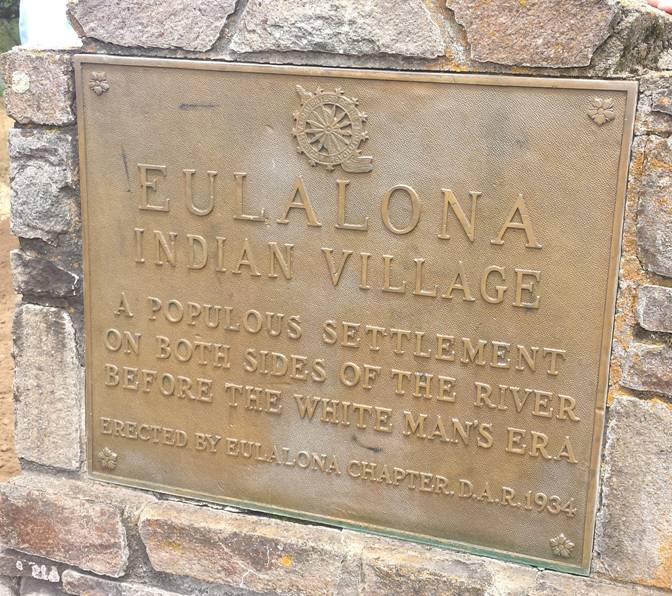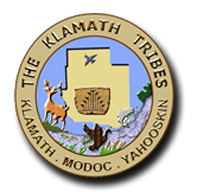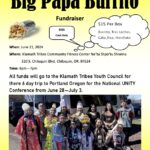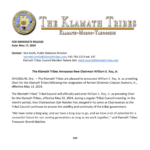Members of the Klamath Tribes stand with Scharri Brennan, a member of the Daughters of the American Revolution, pictured at the left of the monument, at the new location for the Eulalona Indian Village marker. Its new location in Putnam Point Park (across from the link river trail and near Moore Park) commemorates the tribal communities that flourished along the banks of the Link River in Klamath Falls, Oregon.

By LACEY JARRELL H&N Staff Reporter
Eulalona- Meaning “All Along the Top” in the tribal language. This marker commemorates the significance of the native people that lived here prior to settlement. Both sides of the river was utilized by the tribes and was also a site where the Klamath, Modoc, and other tribes gathered in the winter and summer to trade and meet. It was also the site of where Winema was born along the link river. It is significant and true history of the Klamath Basin.
A memorial marking the location of the historic Eulalona Indian Village has a new home.
A small group of individuals, including several members of the Klamath Tribes, gathered Thursday at Putnam Landing Park to commemorate the event.
The park is the third, possibly the fourth, location the monument has been set. The marker was first dedicated by the Eulalona Chapter of the Daughters of the American Revolution on a rocky embankment across from Putnam park, on the south side of Lakeshore Drive. In 1959, the marker was moved to Moore Park.
“We, just like everybody else, aren’t sure why it was moved into Moore Park,” said Perry Chocktoot, director of the Klamath Tribes culture and heritage department.
Klamath County Museum Manager Todd Kepple said the museum has an image he believes shows the marker set in Putnam park at another date, but he doesn’t know any details about when the image was taken or how the marker may have gotten there.
Several individuals spoke about the monument’s new location and the significance of the day.
Scharri Brennan, registrar for the Eulalona Chapter of the Daughters of the American Revolution, said she approached the city about having the monument returned to its original location across from Putnam Landing Park about seven years ago, but no movement was made on the project until recently. “We’re very happy to have it come back,” Brennan said.
Site significance
Chocktoot said the monument, which says “Eulalona Indian Village: A populous settlement on both sides of the river before the white man’s era,” lets the modern world know about the village site and its significance to the Klamath Tribes and Basin history. He noted the Eulalona site was a massive tribal trading post and it spanned down both sides of the of the Link River.
“Some of the most prominent tribal members in our past come from a village in the Link River Canyon. It’s very significant for us, and we’re glad to see it moved back here,” Chocktoot said.
John Bellon, Klamath Falls city parks superintendent, also noted the marker’s historic value.
“By getting the marker back into a prominent location, where not only the community can appreciate it, but also people coming to the community, we better express our past and identify who we are in Klamath Falls,” Bellon said.
Klamath Tribes member Richard Rambo spoke about the Treaty of 1864, in which the Tribes relinquished control of more than 23 million acres of land, including the village site. He said much of the Tribes’ decision to sign the treaty was based on promises made by government that never came to fruition.
“Unfortunately, the promises didn’t follow through, to a large extent. It’s a lesson for today to not become too reliant on government,” Rambo said.
Binding ties
Bob Pallies, a Klamath Falls resident since 1951, said witnessing the monument moved back to its original location has been a passion of his for the last 20 years.
“This something the community can be proud of,” Pallies said.
Chocktoot said the collaborative nature in which the memorial was relocated “helps (tribal members) bind the ties that were severed years ago.”
“We worked together to facilitate this healing and we hope this is just a start. We plan to be more active in the local community and we hope the local community is more active with the Tribes,” he said.





